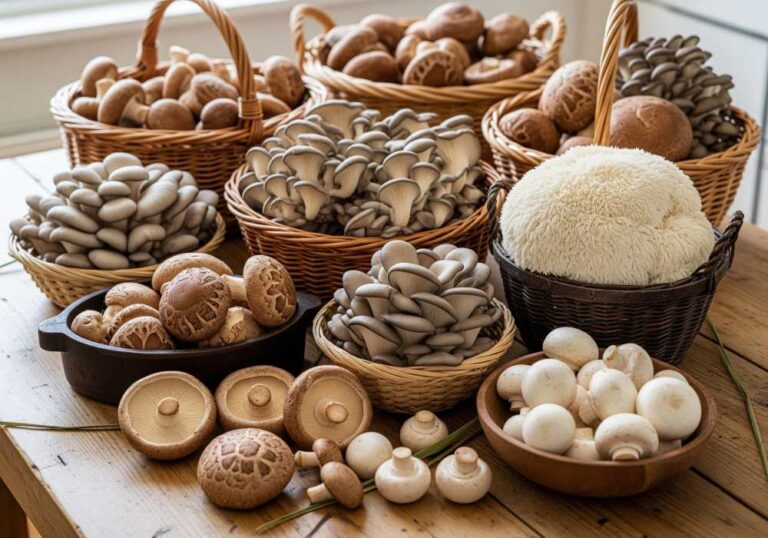If you live with irritable bowel syndrome (IBS), you probably already know how frustrating food can be. One day a meal sits fine, the next it leaves you with cramps, bloating, or worse. Mushrooms are one of those tricky foods that often raise questions in the low-FODMAP community.
Here’s the short version: fresh mushrooms are usually high in FODMAPs because they contain sugar alcohols like mannitol and sorbitol, while canned mushrooms often have much lower levels due to the way they’re processed.
That means the type of mushroom—and how it’s prepared—can make a huge difference in whether it triggers symptoms or not.
When I first started exploring this topic, I was surprised by how much the form of the mushroom (fresh versus canned) changed its impact. The difference isn’t subtle—it’s enough to determine whether mushrooms are safe or problematic on a low-FODMAP diet.
So, if you’ve ever wondered, “Can I eat mushrooms on a low-FODMAP diet?” the answer is not a simple yes or no. It depends on the type and the way you prepare them.
What Are FODMAPs and Why Do They Matter for Mushrooms?
Before we get lost in mushroom varieties, it helps to understand what FODMAPs even are. The term stands for Fermentable Oligosaccharides, Disaccharides, Monosaccharides, and Polyols. These short-chain carbohydrates are poorly absorbed in the small intestine. When they pass into the large intestine, bacteria ferment them, creating gas. For people with IBS, this can cause pain, bloating, or urgent trips to the bathroom.
Mushrooms are relevant here because they contain a group of FODMAPs called polyols, which are sugar alcohols. Polyols include mannitol and sorbitol—the exact compounds found in significant amounts in fresh mushrooms. According to research in Nutrients, polyols are among the hardest to digest, often pulling water into the gut and leading to discomfort in sensitive individuals.
This is why mushrooms are often listed as high FODMAP foods in resources like the Monash University Low FODMAP Diet app, which is the gold standard for practical food guidance in IBS.
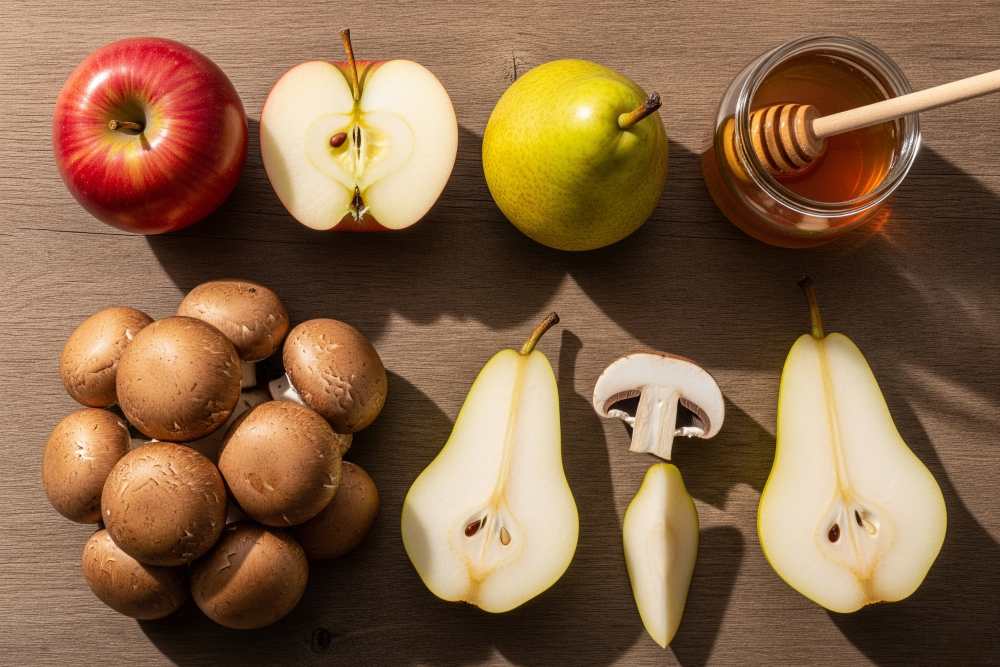
Why Fresh Mushrooms are a Hidden Source of Polyols
Let’s talk about fresh mushrooms. I love cooking with them—whether it’s tossing shiitake into a stir-fry or grilling a big, meaty portobello. But when it comes to FODMAPs, fresh mushrooms can be sneaky troublemakers.
The issue lies in their mannitol and sorbitol levels. Studies, including a detailed analysis in Food Research International, show that common edible mushrooms—like white button, portobello, and shiitake—carry high concentrations of these sugar alcohols. That’s why Monash University consistently marks them as “red light” foods when eaten in typical serving sizes. Even just a handful of sliced button mushrooms can be enough to cause symptoms in someone sensitive to polyols.
From my own experience, I’ve noticed that eating fresh mushrooms can be hit or miss depending on the portion. A tiny sprinkle of fresh oyster mushrooms on a dish might be tolerable, while a big serving of sautéed portobello can feel like a gut bomb. Polyol levels are dose-dependent, meaning the more you eat, the more likely symptoms will appear.
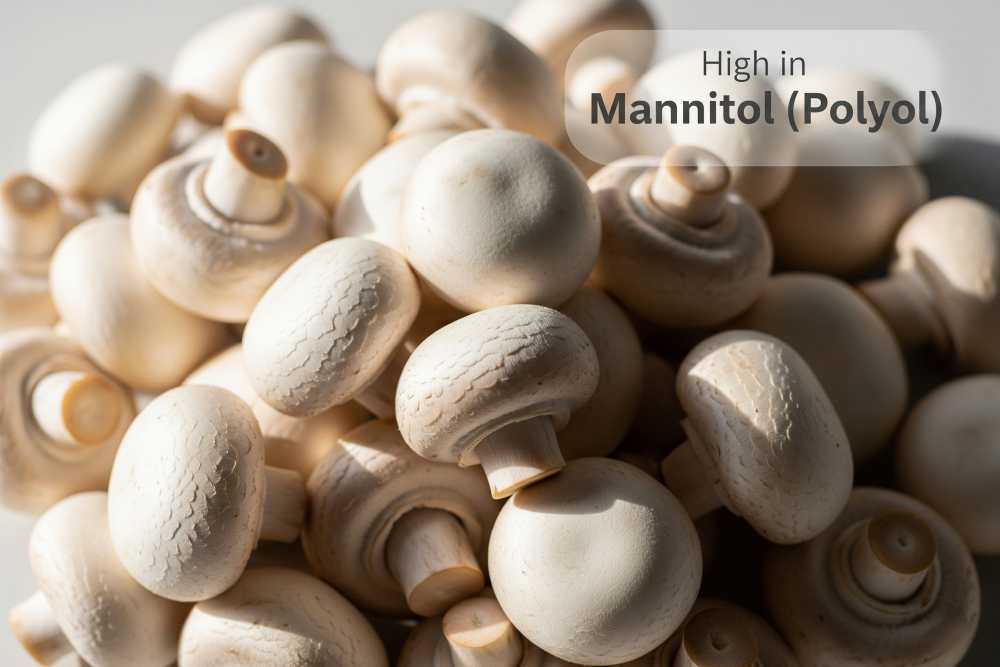
For anyone managing IBS, fresh mushrooms are one of those foods you must approach cautiously.
Yes, they’re nutrient-dense and flavorful, but they’re also a hidden source of compounds that don’t play nicely with sensitive digestive systems.
How Processing Changes FODMAP Content of Canned Mushrooms
Here’s where things get surprisingly good for mushroom lovers on a low-FODMAP diet: canned mushrooms are usually safer than fresh ones.
The reason comes down to the canning process itself. When mushrooms are cooked and stored in liquid, their water-soluble polyols—like mannitol—leach out into the brine. If you drain and rinse the canned mushrooms before eating, you’re discarding much of the FODMAP content along with that liquid.
Monash University’s testing confirms this. Fresh button mushrooms are a high-FODMAP food in small amounts, but canned button mushrooms (when drained) fall into the low-FODMAP category at reasonable serving sizes. It needs to be a substantial reduction. It can change whether someone with IBS can tolerate mushrooms at all.
If you eat the mushrooms with their liquid—or use that liquid in soups or sauces—you’re putting those polyols right back on your plate. So the golden rule is: drain them well.
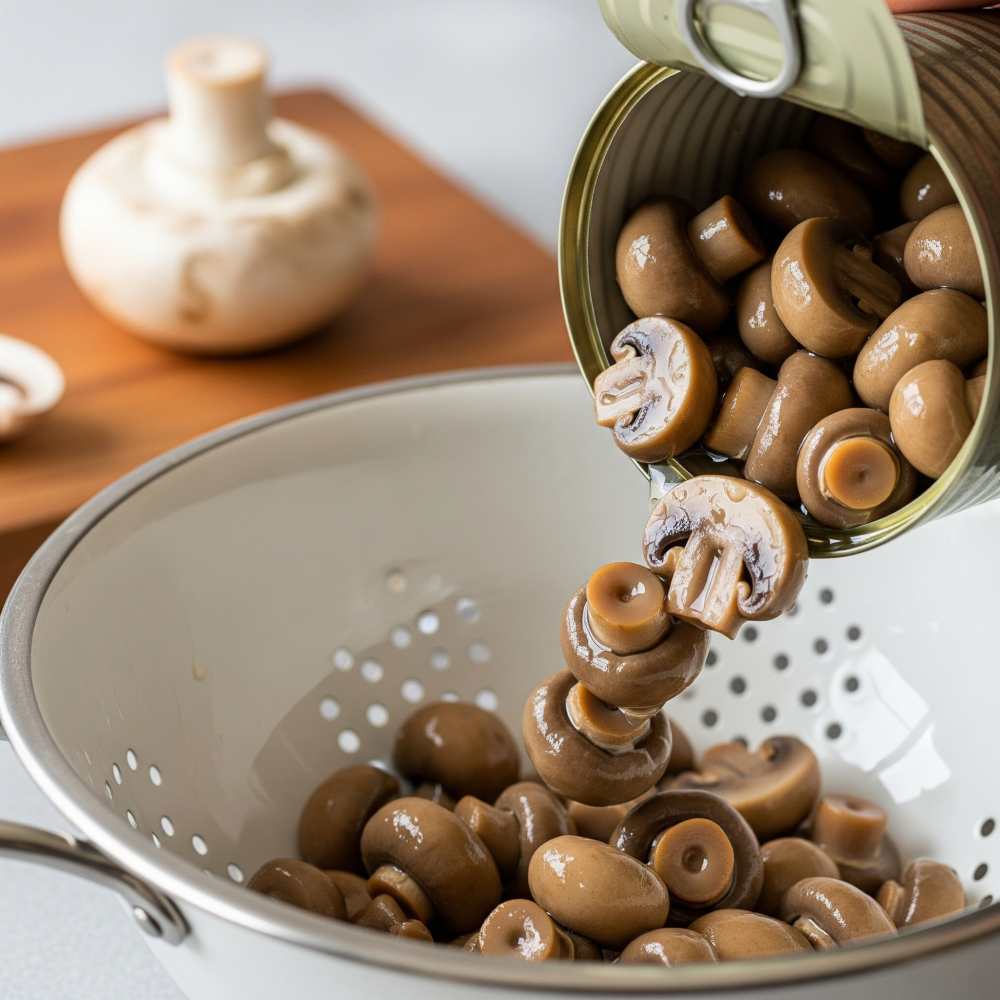
Species Differences: Not All Mushrooms Are Equal
While processing changes FODMAP levels, species differences matter just as much.
The distribution of polyols varies widely among mushroom varieties:
- White button and portobello (which are basically different growth stages of the same species) are typically high in mannitol.
- Shiitake mushrooms contain a mix of polyols and are also problematic for most IBS sufferers.
- Oyster mushrooms, however, are naturally low in FODMAPs—even when fresh—making them one of the safest options.
- Enoki mushrooms can be tricky, but smaller servings may be tolerated better than button or shiitake.

Monash University’s testing supports this breakdown, showing oyster mushrooms as a green-light choice, while most others land in the red zone unless canned.
From a cook’s perspective, this diversity is actually a blessing. Oyster mushrooms are my go-to if I want that earthy, umami punch without the gut backlash. And when I’m craving the meaty bite of button or portobello, I reach for the canned variety.
Knowing your species gives you more freedom in the kitchen.
Portion Size and Individual Tolerance of FODMAP Contents
FODMAPs aren’t all-or-nothing. They work on a dose-response effect: small amounts may go unnoticed, but larger servings can quickly overwhelm the gut. This is why Monash University doesn’t just label foods as high or low FODMAP; they specify serving sizes. For mushrooms, the difference between 20 grams and 100 grams can be the difference between a symptom-free meal and a very uncomfortable evening.
Here’s what matters most:
- Fresh high-FODMAP mushrooms (like button or shiitake) often cause issues even in small amounts.
- Canned mushrooms are more forgiving, but still not limitless—portion control is essential.
- Individual thresholds vary. Some people may tolerate half a serving without symptoms, while others react to even tiny amounts.
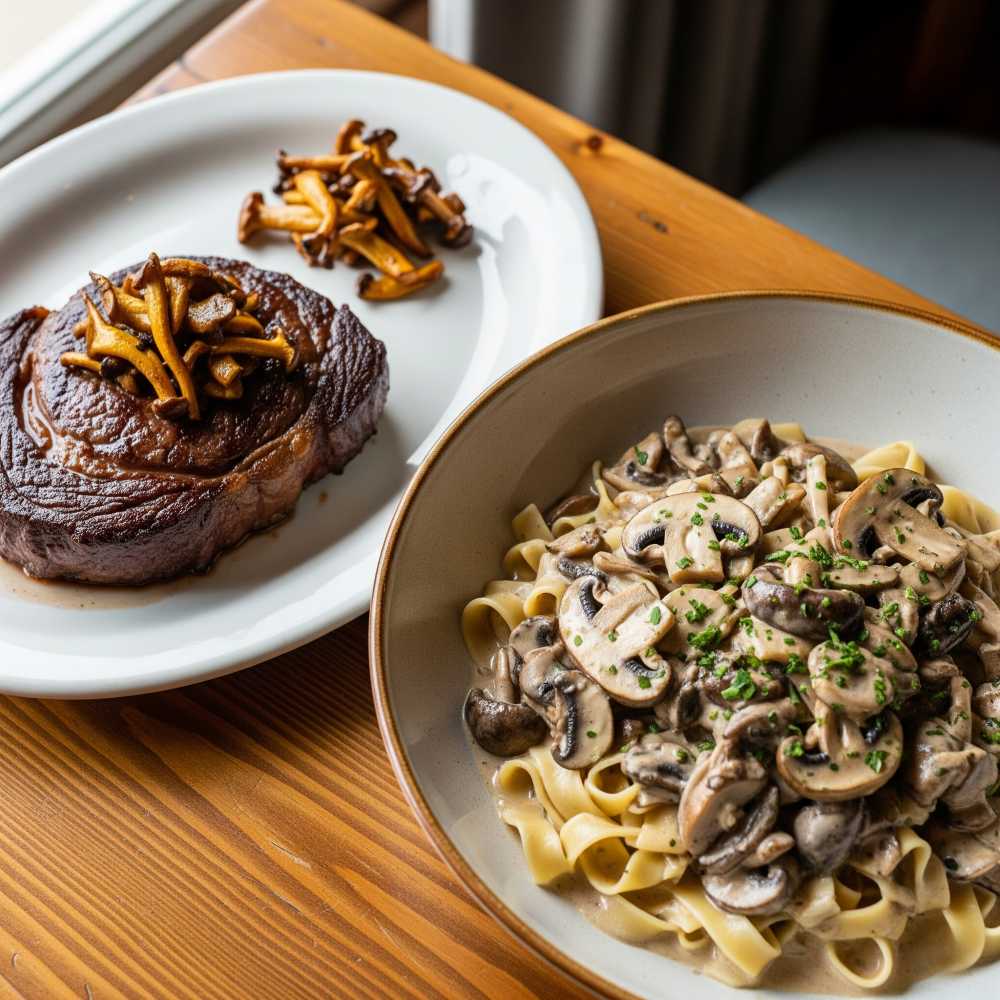
IBS is unpredictable, but allowing room to test tolerance levels can help you find that sweet spot where flavor and comfort coexist.
So, when it comes to mushrooms, it’s not just what you eat, but how much and in what form.
Cooking and Meal Planning with Mushrooms
Knowing the FODMAP story behind mushrooms is one thing, but actually applying it in the kitchen is where it matters most. It comes down to making smart swaps and being strategic.
Here are some practical ways to enjoy mushrooms without the digestive gamble:
- Choose canned over fresh: If you love the classic taste of white button or portobello, grab the canned version, drain it thoroughly, and rinse before cooking. This significantly reduces the polyol load.
- Lean on low-FODMAP species: Fresh oyster mushrooms are naturally low in polyols, which makes them an excellent choice for stir-fries, soups, or pasta dishes. They add that same savory depth without the gut payback.
- Use mushrooms as flavor boosters, not bulk: Instead of making them the main ingredient, treat mushrooms as a garnish or flavor accent. A handful of canned champignons in a risotto or a few slices of oyster mushrooms on pizza can satisfy without overwhelming digestion.
- Pair with low-FODMAP staples: Combine mushrooms with foods like rice, zucchini, or chicken breast to balance the meal. This prevents the stacking effect where multiple moderate-FODMAP foods eaten together cross your tolerance threshold.

Low-FODMAP diet doesn’t mean giving up mushrooms—it just means being more intentional. In my own kitchen, I often keep a can of champignons in the pantry and a bag of fresh oyster mushrooms in the fridge. That way, no matter what recipe I’m craving, I have an option that works.
Final Takeaway
At the end of the day, mushrooms are not off-limits—they’re conditional.
For anyone living with IBS, the key is flexibility: knowing when to reach for canned, when to choose oyster, and when to skip mushrooms altogether. The science backs this up, but so does real-life trial and error.
From my own experience, mushrooms went from being an off-limits food to something I can enjoy again—with a few adjustments.








